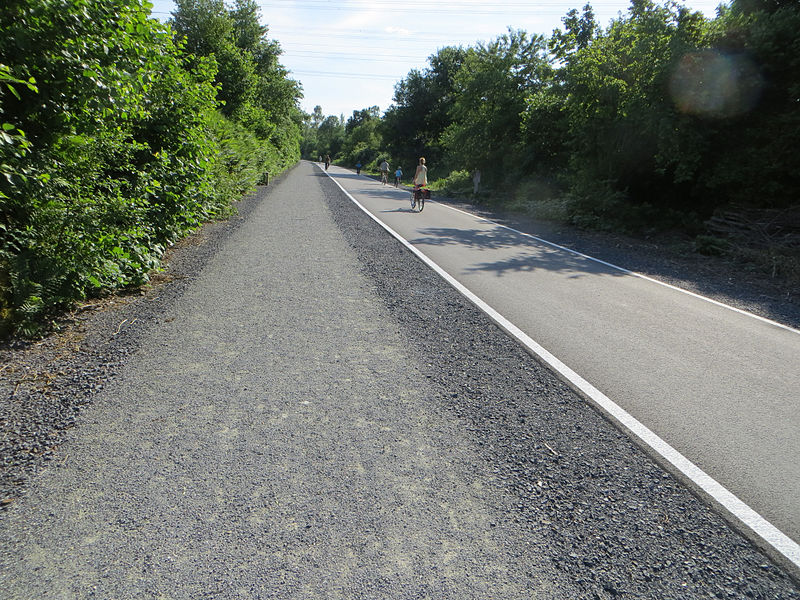
Norway’s Super Cycle Highways Plan: Never too cold (or dark, or hilly) to cycle
Norway’s transport strategy aims to a 50% reduction in emissions by 2030. To do so, they want to become a top cycling country.
Looking at the remarkable cycling modal shares of their Scandinavian neighbors (Denmark 17%, Sweden 12%), they must have felt the need to catch up in terms of cycling practices. The intention of Norway’s transport agencies to raise their modal share of 4% becomes clear by reading the early draft of the National Transport Plan 2018-2029 presented in late February 2016, where the willingness to drag away people from their cars and take them to ride a bicycle is explicit.
The general purpose stated in the document is ambitious: the cut of CO2 emissions by half of the current level by 2030. And just as ambitious is the investment that stands out to the attention of cycling enthusiasts: the proposal of allocating the sum of 7.8 billion Norwegian Kroner (corresponding to about 850 mln EUR) throughout the decade 2018-2029, in order to build by 2030 10 broad, two-lane, cross-country bike tracks in and near Norway’s nine largest cities. In other terms, 130 Euros per inhabitant would be allocated in the next decade for the realization of a project that, according to the draft, should be 100% state-funded. A far-reaching investment that matches with the sums allocated for similar projects by Holland and Denmark, countries that always stand as basis for comparison in cycling infrastructure.
The transport agenda addresses the climate issue by setting several goals, and the cycle highways are only one part of the strategy. According to the plan, by 2030 75% of the country’s buses, 50% of its trucks are going to be low-emission, 40% of its short-distance ships and ferries must be either low emission or use biofuels, alongside a zero-growth objective in the use of private cars.
In a country which is rich of oil resources and whose topography and climate make it hard for people to jump on a bike for a long part of the year, the Super Cycle Highways Plan represents a courageous top-down commitment, whose long-term objective consists in raising the percentage of trips made by bike in the country to a percentage between 10 % and 20%. The willingness of the government to spread good practices in regards to cycling and to make it attractive for a larger part of the population, by improving coordination with other modes of transports, is demonstrated by the words of Abid Raja, second deputy chair of the Standing Committee on Transport and Communications: ‘Cycle super-highways are the right commitment. But it must not be at the expense of other public transport measures and good initiatives in rural areas’.
At this regard, it is important to specify that initial focus of the plan will be on creating links between the main cities in the country and their surrounding areas, extending the protected cycling network out from urban centers into the countryside beyond. Equally important is to highlight that the infrastructure plan comes along with the strategy of offering subsidies and VAT exemptions for the purchase of electric bikes, whose extensive usage would here more than almost anywhere represent the real game changer in regards to modal share.
The Plan has already faced the skepticism of many: the main concerns regard the difficulty in taking advantage of such an expensive network during the long, dark and frigid Norwegian winters. The quote by North Norwegian politician of the Labour Party Kjell-Idar Juvik explicitly interprets this feeling: “In the winter it’s not realistic for people to throw themselves onto bikes. They already have enough trouble getting out and scraping snow off their cars.”
The project is still only at an early stage but it clearly shows how cycling finds itself at the crossroads of transport and climate policies, and how it stands as one of the solutions to both issues. Furthermore, it is encouraging to witness how a country such as Norway decides to reduce its dependence from oil resources, by declaring its commitment to sustainable modes of transport and by turning its oil revenues into bicycle highways.
The list of the 10 cycle highways:
Regions:
Contact the author
Recent news!
Upcoming events
Contact Us
Avenue des Arts, 7-8
Postal address: Rue de la Charité, 22
1210 Brussels, Belgium









